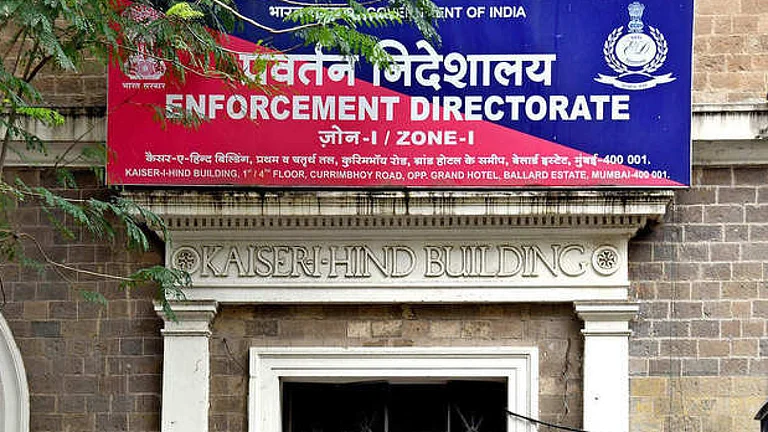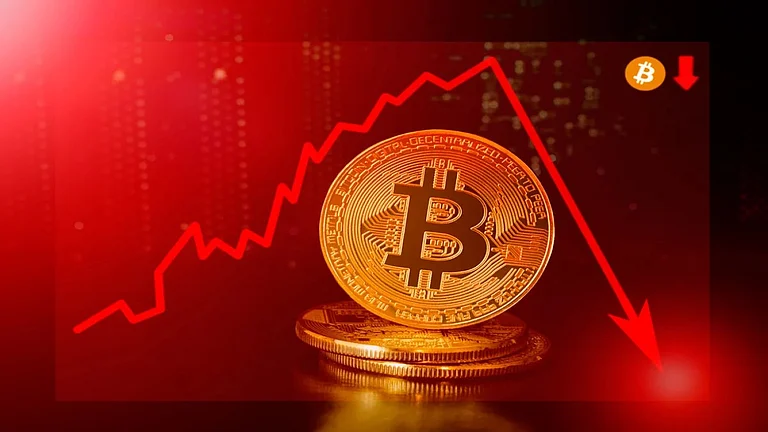Once known as India’s only crypto decacorn, Polygon Labs rode the 2021 digital asset boom to a dazzling $20 billion valuation. It was the only jewel in Indian crypto crown. Its native toke, MATIC, soared to an all-time high of $2.92 in May 2021. Founded by three Indians Sandeep Nailwal, Jaynti Kanani and Anurag Arjun in 2017, the Indian crypto decacorn has also raised $451 million across four funding rounds till 2022.
The blockchain start-up which provides secondary scaling solutions is backed by top investors like Mark Cuban, SoftBank, Tiger Global, Sequoia Capital, Accel Partners, Elevation Capital, and many others. Despite flying high in the sky, the gloom has dimmed since then. MATIC is now trading at just $0.24 on May 26, 2025. And the company’s market cap has also crashed to $2.53 billion --- nearly 75% fall, according to CoinMarketCap data.
The drop raises concerns among crypto investors about possible fundamentals’ issue in the company. Is the company in decline, or just an eye of a larger storm?
If we look at the overall crypto market, it has seen a number of volatile phases, funding winters and market jitters. In the last one, when the largest doom hit in 2021-22, a number of crypto tokens saw a sharp carnage in the prices. Polygon isn't an exception. A few projects like Terra (LUNA) went completely extinct from the crypto landscape, while a number of others including Cardano (ADA), Chainlink (LINK), Avalanche (AVAX), The Sandbox (SAND) and others saw a steep fall in their prices. A number of these tokens have not been able to recover even after 2-3 years of aftershocks.
On the other hand, Bitcoin is an exception as its dominance in the overall crypto market capitalisation has increased to more than 60% from 40-45% levels about three years ago. Thus, it is the biggest reason for pushing the overall marketcap to $3 trillion. The total valuation of crypto tokens slipped below $800 billion in the last funding winter but with Bitcoin hitting $90,000-$100,000-odd levels, it has seen a sharp rebound, even as other tokens struggle to bounce back on similar lines.
Speaking to Outlook Business regarding the same trend, Polygon’s Global Head of Payments and Liquidity Aishwary Gupta attributed this downturn to the broader crypto market’s changing tides amid geopolitical risks and rising competition from new entrants.
“The token price decline is more about the overall crypto market globally and has nothing to do with Polygon but if we look at all Layer 2 they are even at a worse stage from price point. It’s not specific to Polygon,” he said.
The Real Culprit
“The real issue behind the decline is the macro market. In 2021, crypto token supply was limited and liquidity was concentrated. Now, there are millions of tokens in the market, especially meme coins. This trend has significantly diluted liquidity in the Indian crypto market,” said Gupta while citing an example of Trump Coin.
For instance, when the Trump coin was launched, it siphoned off 25% of the total market liquidity in a single day. “So, this kind of fragmentation affects every other player in the market,” he stated. The Trump Coin or $TRUMP, built on the Solana network, was launched at a price $0.18. Within few hours, its market cap reached a staggering $14.5 billion and the coin’s value shot up to $7.1 on January 19.
It’s not only Polygon but a few more examples whose valuations explain the market trend. These include StarkWare whose valuation has witnessed a drop from $8 billion to $750 million; Arbitrum’s market cap fell from $7 billion to $1.4 billion; and Optimism is down from $9 billion to $1 billion.
“Polygon is being impacted heavily by competitors such as Avalanche and Aptos that are building features to support relevant use cases for the blockchain,” said Siddharth Ugrankar-CEO & Co Founder, Qila.io.
He said the attention of crypto investors is mostly on Bitcoin which is seen as the only truly decentralised asset. On the other hand, there is a growing perception among investors that Web3 might be becoming “irrelevant” and people are questioning its need when artificial intelligence (AI) itself is proving to be powerful, Ugrankar added.
‘Fundamentals Still Solid’
Despite these shifts, Polygon claims to be at first spot in USDC user count globally, and for USDT, the crypto start-up stands at third position after Tron and Ethereum. “Major institutions like BlackRock, Hamilton Lane, and Franklin Templeton are also building on our chain,” Gupta added.
Other crypto players believe that Polygon still stands out as one of India’s few blockchain firms building for the world. The company strengthens its position as a leader in Ethereum scaling solutions, said Mudrex CPO (chief product officer) and cofounder Alankar Saxena. He asserted that Polygon continues to rank as Ethereum’s largest Layer-2 token by market cap, growing with a 40% surge in new addresses.
The company also claims that its Polygon PoS emerges as the first chain for stablecoin activity with over 40% market share amongst key leaders.
Possible Comeback
Saxena expressed confidence in Polygon’s comeback with its strong focus on the developer ecosystem. Currently, it has more than 1,240 developers on the platform. “As market sentiment improves, Polygon’s innovation and global adoption are set to drive its next growth phase, reinforcing India’s growing influence in the blockchain space,” he said.
“To bring some of their golden days back, Polygon can focus on real world use cases for crypto such as trade finance and identity. Interoperability with other chains can also be a great direction for them. They can leverage their massive user base to support these type of use cases,” said Ugrankar.
The company has collaborated with Reliance Industries’ digital arm Jio Platforms to offer Web3 capabilities to its existing applications and services. The partnership enables Jio to leverage Polygon’s blockchain solutions for its user base of over 450 million customers. In addition, Gupta also revealed that Polygon will launch a major initiative with Flipkart next month. “We have already collaborated with IRCTC and are in talks with MNREGA to build further use cases,” he said.
After shift their headquarters to Dubai due to taxation issues, Gupta stated that Polygon has invested over $20 million in India in the past three years through grants, developer programs, and direct investments.
The company continues to push for real-world blockchain use cases, indicating it hasn’t lost its drive. Yet, the question lingers: Is it a cautionary tale of how quickly fortunes can change in crypto landscape?































